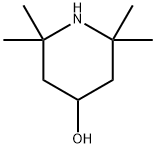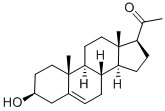A5258112
Leaf Alcohol , 98% , 928-96-1
Synonym(s):
(Z)-3-hexen-1-ol;Leaf alcohol
CAS NO.:928-96-1
Empirical Formula: C6H12O
Molecular Weight: 100.16
MDL number: MFCD00063217
EINECS: 213-192-8
| Pack Size | Price | Stock | Quantity |
| 5ml | RMB29.60 | In Stock |
|
| 25ML | RMB111.20 | In Stock |
|
| 100ML | RMB343.20 | In Stock |
|
| 500ML | RMB1359.20 | In Stock |
|
| others | Enquire |
Update time: 2022-07-08
PRODUCT Properties
| Melting point: | 22.55°C (estimate) |
| Boiling point: | 156-157 °C(lit.) |
| Density | 0.848 g/mL at 25 °C(lit.) |
| vapor density | 3.45 (vs air) |
| vapor pressure | 2.26hPa at 25℃ |
| refractive index | n |
| FEMA | 2563 | CIS-3-HEXENOL |
| Flash point: | 112 °F |
| storage temp. | Flammables area |
| solubility | DMSO: 100 mg/mL (998.40 mM) |
| form | Liquid |
| pka | 15.00±0.10(Predicted) |
| Specific Gravity | 0.848 (20/4℃) |
| color | APHA: ≤100 |
| Odor | at 10.00 % in dipropylene glycol. fresh green cut grass foliage vegetable herbal oily |
| Odor Type | green |
| biological source | synthetic |
| Water Solubility | INSOLUBLE |
| Merck | 14,4700 |
| JECFA Number | 315 |
| BRN | 1719712 |
| Stability: | Stable. Substances to be avoided include strong oxidizing agents and strong acids. Flammable. |
| LogP | 1 at 35℃ |
| CAS DataBase Reference | 928-96-1(CAS DataBase Reference) |
| NIST Chemistry Reference | 3-Hexen-1-ol, (Z)-(928-96-1) |
| EPA Substance Registry System | (Z)-3-Hexen-1-ol (928-96-1) |
Description and Uses
Leaf alcohol exists as a liquid at room temperature with a characteristic odor of green leaves. It is found in green tea, violet leaf oil, and many types of leaves, herbs, and grasses. Leaf alcohol finds applications in perfumery as floral fragrance. Leaf alcohol is also investigated for its antidiabetic activity.
cis-3-Hexen-1-ol is a naturally occuring compound that has the smell of freshly cut grass and is used to obtain a тАЬgreenтАЭ taste/smell in certain flavours and fragrances.
Safety
| Symbol(GHS) |  GHS02 |
| Signal word | Warning |
| Hazard statements | H226 |
| Precautionary statements | P210-P240-P241-P280a-P303+P361+P353-P501a |
| Hazard Codes | F |
| Risk Statements | 10 |
| Safety Statements | 16 |
| RIDADR | UN 1987 3/PG 3 |
| WGK Germany | 1 |
| RTECS | MP8400000 |
| F | 10 |
| TSCA | Yes |
| HazardClass | 3 |
| PackingGroup | III |
| HS Code | 29052990 |
| Hazardous Substances Data | 928-96-1(Hazardous Substances Data) |
| Toxicity | The acute oral LD50 value in rats was reported as 4.70 g/kg (3.82-5.58 g/kg) (Moreno, 1973). The acute dermal LD50 value in rabbits was reported as > 5 g/kg (Moreno, 1973). |




